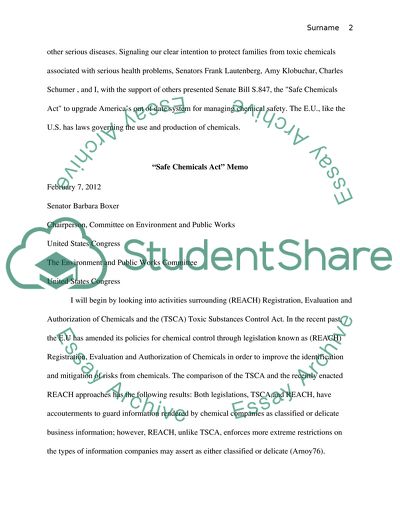Cite this document
(The Issue of Safe Chemicals Act Essay Example | Topics and Well Written Essays - 2250 words, n.d.)
The Issue of Safe Chemicals Act Essay Example | Topics and Well Written Essays - 2250 words. Retrieved from https://studentshare.org/chemistry/1588579-a-background-briefing-memorandum-for-an-upcoming-hearing-on-the-proposed-safe-chemicals-act
The Issue of Safe Chemicals Act Essay Example | Topics and Well Written Essays - 2250 words. Retrieved from https://studentshare.org/chemistry/1588579-a-background-briefing-memorandum-for-an-upcoming-hearing-on-the-proposed-safe-chemicals-act
(The Issue of Safe Chemicals Act Essay Example | Topics and Well Written Essays - 2250 Words)
The Issue of Safe Chemicals Act Essay Example | Topics and Well Written Essays - 2250 Words. https://studentshare.org/chemistry/1588579-a-background-briefing-memorandum-for-an-upcoming-hearing-on-the-proposed-safe-chemicals-act.
The Issue of Safe Chemicals Act Essay Example | Topics and Well Written Essays - 2250 Words. https://studentshare.org/chemistry/1588579-a-background-briefing-memorandum-for-an-upcoming-hearing-on-the-proposed-safe-chemicals-act.
“The Issue of Safe Chemicals Act Essay Example | Topics and Well Written Essays - 2250 Words”, n.d. https://studentshare.org/chemistry/1588579-a-background-briefing-memorandum-for-an-upcoming-hearing-on-the-proposed-safe-chemicals-act.


